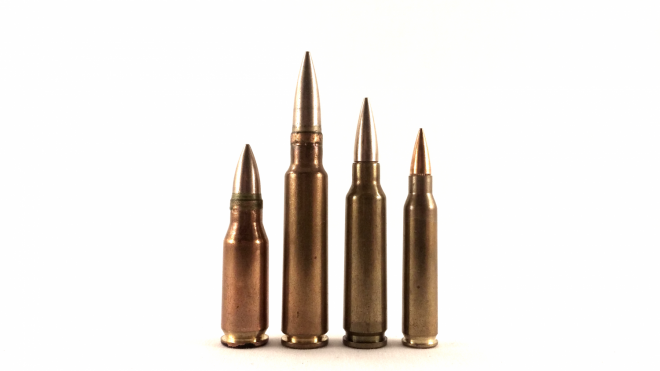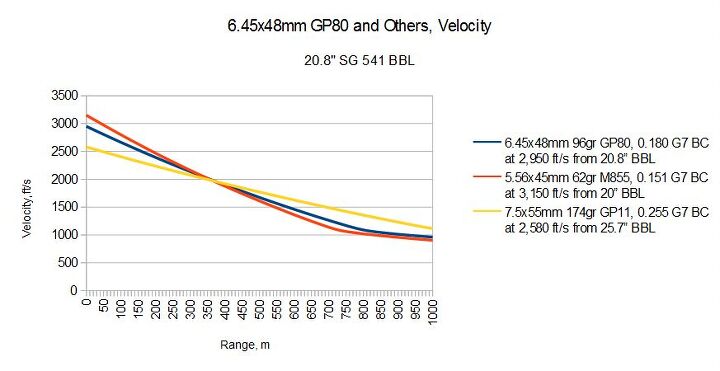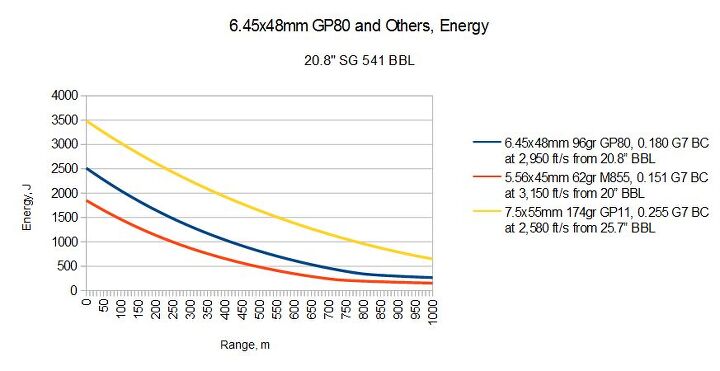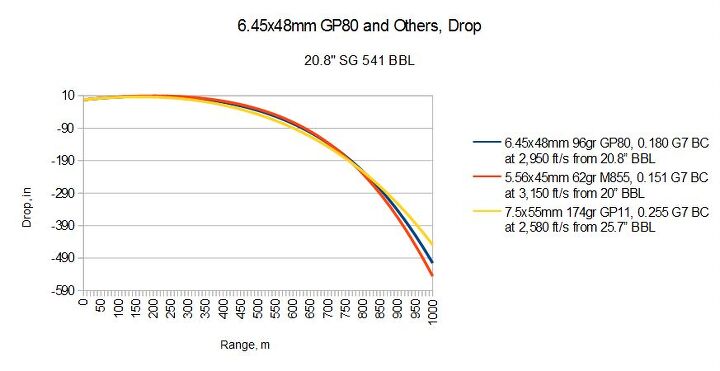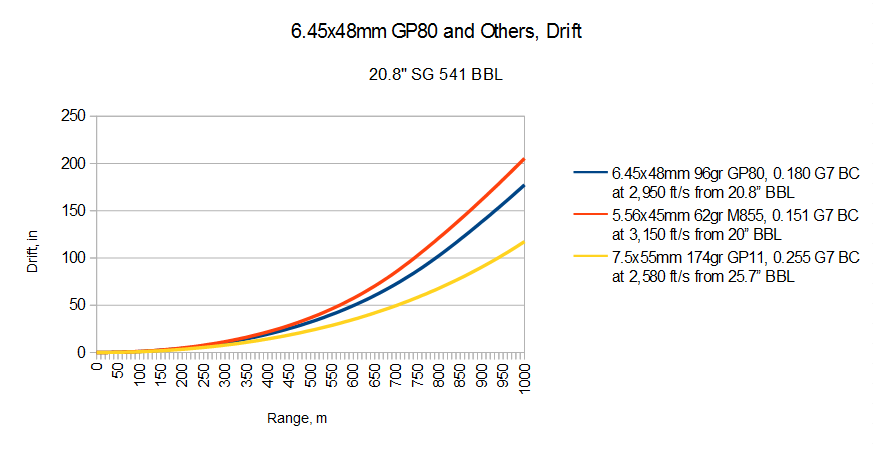Information on this round and the weapons designed to fire it is scarce, so the details in this article may be at times incorrect. Just letting you know. -NF
Before the SIG SG 550 was adopted by the Swiss Army as the Stgw. 90, there was another series of rifles, called the SG 540, which was developed by SIG as a new generation of infantry weapon. The 540 was produced in the 5.56x45mm caliber originally developed for the US AR-15 (not the later NATO-standard 62gr round), while the 542 variant was produced in 7.62 NATO caliber. The 541, in between the two, was produced in a unique experimental caliber, called at different times the 6.35 or 6.45x48mm GP80. This round is very similar in size and shape to 6.5mm rounds at various times proposed by different personalities as next-generation general purpose cartridges to replace both 5.56mm and 7.62mm, but the actual Swiss 6.35/6.45mm round was different than rounds like the 6.5 Grendel or .264 USA in that it used a light-for-caliber bullet fired at a high muzzle velocity. In fact, the Swiss 6.35/6.45 represents a sort of “big SCHV” paradigm that has not been seen elsewhere.
I have to admit, I don’t entirely know what the shape of the GP.80 projectile looks like (I own one of the rounds, but am not willing to pull the bullet!), and so the G7 BC I use here is really nothing more than an educated guess. Further, I am not sure exactly what barrel length the 2,950 ft/s muzzle velocity of the GP.80 cartridge was measured from. I have stated a 20.8″ barrel length here, since that is the barrel length of the 5.6mm Stgw. 90 that was eventually adopted.
As you can see, performance in terms of velocity loss, drop, and drift are very similar to the 5.56mm caliber that was eventually adopted as the 5.6mm GP90 (functionally identical to 62gr 5.56×45 NATO). Energy is somewhat higher than that for 5.56mm, although the difference shrinks as range increases.
In terms of weight, the 6.35/6.45 Swiss is oddly heavy, at 19.4 grams. This is because of the large case (about the same size as today’s 6.5x47mm Lapua) relative to the round’s fairly modest performance. The reason for this is unknown, perhaps the Swiss intended to have a heavier alternate loading for long-range shooting.
 Your Privacy Choices
Your Privacy Choices
